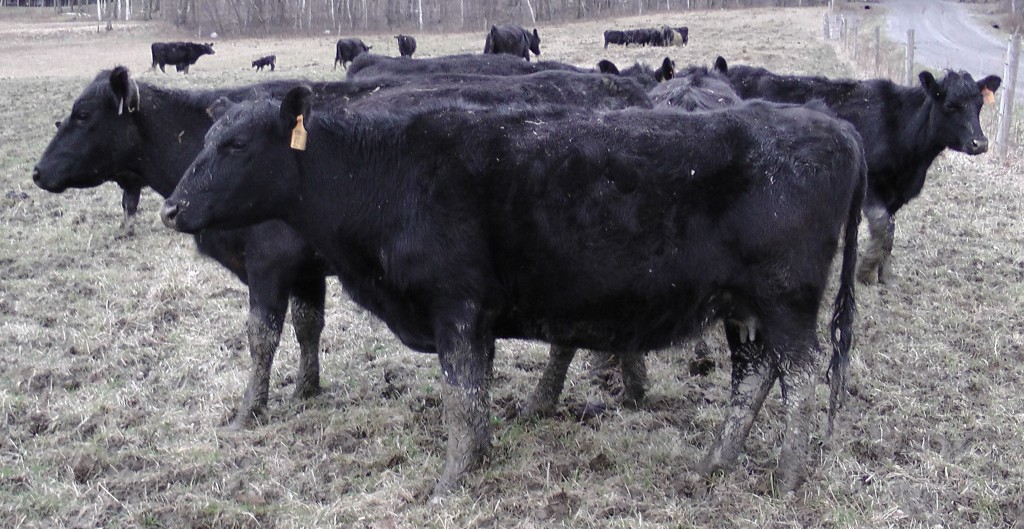What would your ideal herd of cattle look like? Medium framed, high fertility, efficient in feed to weight gain conversions, long legged, short legged, fast or slow growing? All of these things are important to think about when breeding you cattle. Just the other day I was browsing in the “Farm and Garden” section of Craigslist and I saw a listing for a herd bull. Curious, I looked at the listing and saw a feminine, long legged, shallow chested animal. Who decided this was an appropriate herd bull? If you hadn’t thought about your goals ahead of time, you may not care very much who you breed your cows to. If you use a breeding animal that doesn’t fit your farm or goals, you can be very disappointed in the long run.
Decide what is important to you before you purchase animals or pick a new bull to use. Half of your herd’s genetics are contributed from the bull and if I had chosen this bull from Craigslist to be half of the genetic future of my herd, I most likely would be disappointed. The same thinking is important for the cows you decide to purchase as well. If my goal is to have a herd of cows that are good mothers and calve easily, why would I keep animals that don’t raise calves well year after year? These poor genetics are passed on to their offspring, who reproduce and fill your herd with animals that do not exhibit the traits you are looking for.
Check out the video on this page of a recent meeting Cornell Cooperative Extension had called the “Calving Success Twilight Meeting” at Black Queen Angus, LLC. The video will give you a glimpse into what the owner, Morgan Hartman, has for goals in his herd. Efficiency, reproductive and mothering abilities, correct conformation and temperament are some of the things that he selects for. If he finds an animal doesn’t meet his standards he is willing to cull them. Through his rigidity in his breeding program, he has developed a herd of cattle that are very productive and self-sufficient.
These ideas are not limited to cattle. If you have sheep, goats, horses, pigs, or other animals, having defined selection criteria will help you to move forward in your breeding program. Often in Extension farmers ask us questions and want “the answer.” This is often a difficult thing to give, as what works for one farm may not work for another. There are as many different ideas, goals, and ways to make things work as there are farmers. Take some time and give some thought to what type of goals you have for your herd! If Ashley can answer any questions, feel free to contact her at arp253@cornell.edu or (518) 272-4210.


